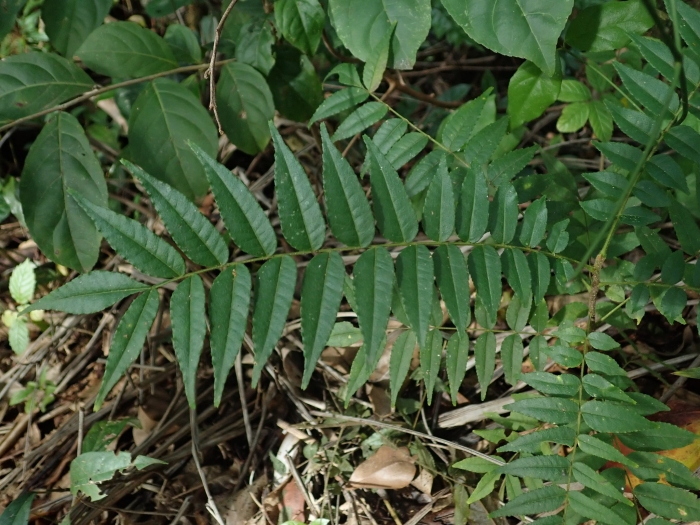Martinique Prickly Ash
(Zanthoxylum martinicense)
Martinique Prickly Ash (Zanthoxylum martinicense)
/
/

© Daniel Cahen
CC BY 4.0
Image By:
© Daniel Cahen
Recorded By:
Copyright:
CC BY 4.0
Copyright Notice:
Photo by: © Daniel Cahen | License Type: CC BY 4.0 | License URL: http://creativecommons.org/licenses/by/4.0/ | Uploader: danielcahen | Publisher: iNaturalist |

























Estimated Native Range
Summary
Zanthoxylum martinicense, commonly known as Martinique prickly ash or white pricklyash, is an evergreen tree that can reach up to 66 feet in height. It is native to the West Indies and northern South America, including Colombia, Ecuador, and Venezuela, where it is typically found in tropical dry forests and limestone hills. This species thrives in well-drained, limestone-based soils and is adapted to full sun conditions.
The Martinique prickly ash is characterized by its pinnately compound leaves, which are aromatic when crushed, and its bark is covered with thick, conical spines. It produces inconspicuous flowers; male and female flowers are borne on separate trees (dioecious). The fruit is a capsule that splits open to reveal shiny black seeds, which are dispersed by birds. In cultivation, this tree is valued for its ornamental spines, fragrant foliage, and its use in traditional medicine. It is often used in tropical landscapes for its unique appearance and can be grown as a specimen tree or for creating natural barriers. The tree requires minimal maintenance once established and is relatively drought-tolerant. However, it may not be suitable for small gardens due to its spiny nature and potential size.CC BY-SA 4.0
The Martinique prickly ash is characterized by its pinnately compound leaves, which are aromatic when crushed, and its bark is covered with thick, conical spines. It produces inconspicuous flowers; male and female flowers are borne on separate trees (dioecious). The fruit is a capsule that splits open to reveal shiny black seeds, which are dispersed by birds. In cultivation, this tree is valued for its ornamental spines, fragrant foliage, and its use in traditional medicine. It is often used in tropical landscapes for its unique appearance and can be grown as a specimen tree or for creating natural barriers. The tree requires minimal maintenance once established and is relatively drought-tolerant. However, it may not be suitable for small gardens due to its spiny nature and potential size.CC BY-SA 4.0
Plant Description
- Plant Type: Tree, Shrub
- Height: 10-30 feet
- Width: 10-15 feet
- Growth Rate: Moderate
- Flower Color: Green
- Flowering Season: Spring
- Leaf Retention: Evergreen
Growth Requirements
- Sun: Full Sun, Part Shade
- Water: Medium
- Drainage: Medium
Common Uses
Bird Garden, Butterfly Garden, Deer Resistant, Edible*Disclaimer: Easyscape's listed plant edibility is for informational use. Always verify the safety and proper identification of any plant before consumption., Low Maintenance
Natural Habitat
Native to tropical dry forests and limestone hills in the West Indies and northern South America
Other Names
Common Names: Yellow Wood, Prickly Ash, Yellow Prickle, Bitter Wood
Scientific Names: , Zanthoxylum martinicense, Fagara martinicense, Zanthoxylum clava-herculis, Zanthoxylum juglandifolium var. berterianum,
GBIF Accepted Name: